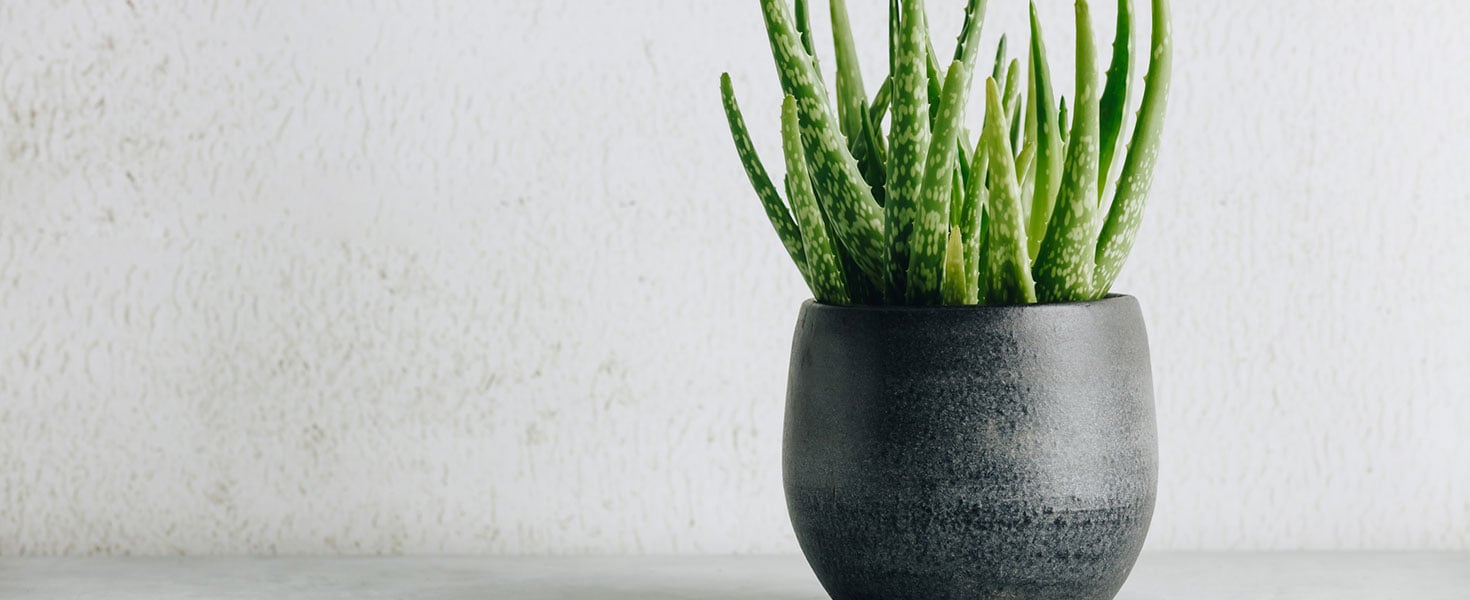

Owning houseplants has become increasingly popular—just search #plantsofinstagram for inspiration. In fact, the most recent National Gardening Survey states that 18- to 34-year-olds now occupy 29% of all gardening households.
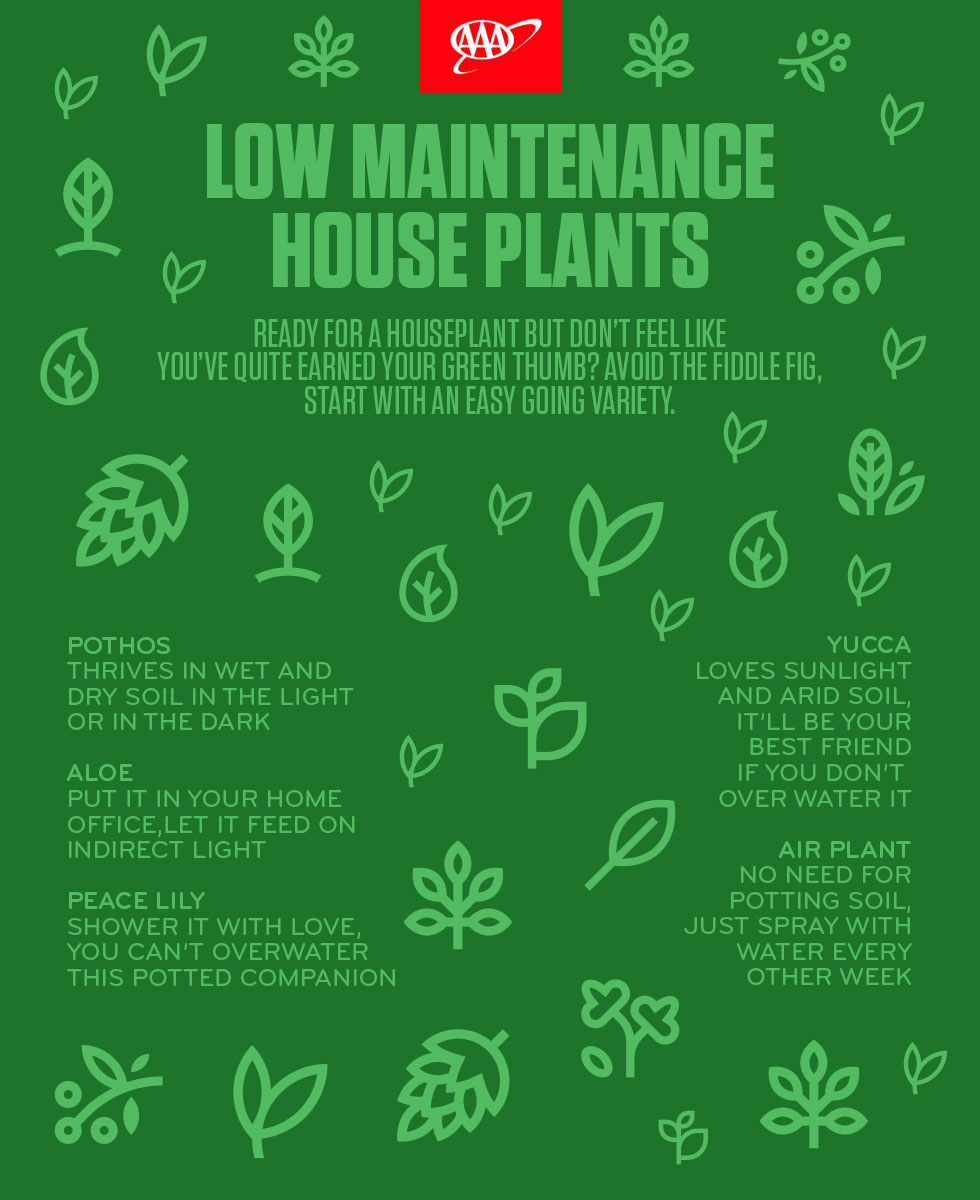
Interacting with houseplants is actually proven to help lower blood pressure, calm the nervous system, and promote a general feeling of wellbeing. Studies have shown they can help improve concentration and productivity, reduce stress levels, and boost your mood. Plus, they help clean the air in your home by absorbing toxins, increasing humidity, and producing oxygen.
Whether you haven’t had the best of luck keeping indoor houseplants alive, or you’ve never even tried, don’t get discouraged just yet. Even if you don’t have a green thumb, that doesn’t mean you can’t take care of houseplants. Here are some of the easiest houseplants to care for, and tips for helping them thrive.
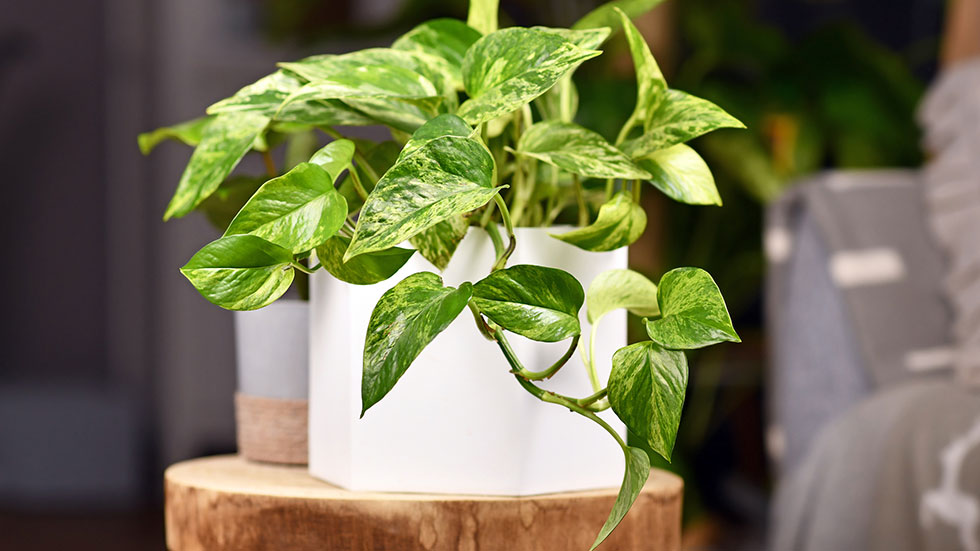
POTHOS
Pothos plants are great for beginner plant parents because their care is so easy, and they do well in a range of environments.
Light—Pothos plants do best in bright, indirect light, but can also thrive in low light.
Soil—These plants can be grown in dry soil, or in vases of water. They will grow in virtually any type of soil.
Water—Generally, water your pothos once per week. Avoid overwatering by allowing the soil to dry out between watering.
If your plant’s leaves are brown or yellow, remove the dead leaves and increase watering. Blackened leaves, little or no growth, or loss of color can be due to lack of light, so move to a brighter location. Pale or brown leaves may mean it’s getting too much light, so move to an area where the sunlight is more indirect.
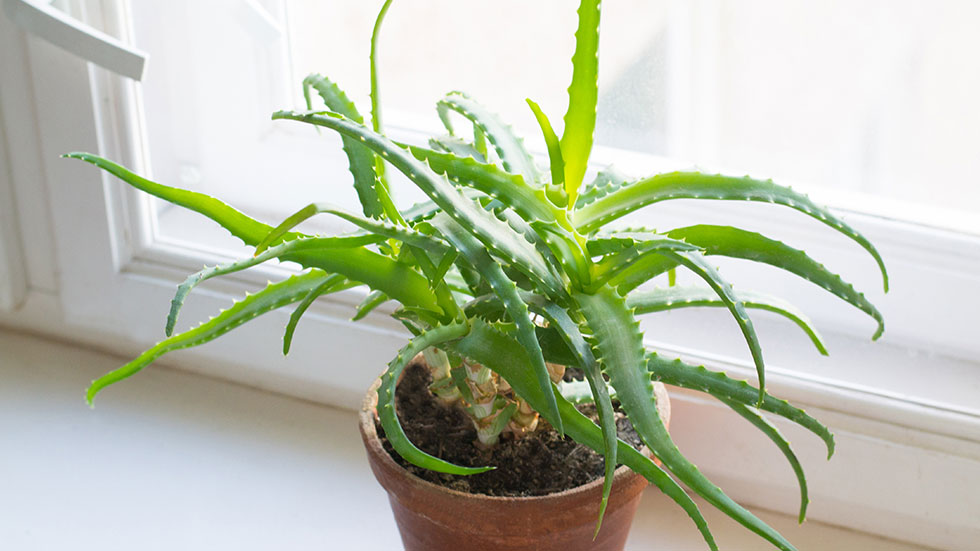
ALOE
Not only is aloe easy to grow and care for, it’s also a useful plant to have around. The gel from its leaves makes a soothing skin salve for burns, can be used to help clear acne or scars, and ingested to help improve digestive health.
Light—Aloe needs bright indirect light, so they do best in south or west-facing windows.
Soil—These plants are a type of succulent, so they do best in dry conditions. They can be in a cactus potting soil mix or regular potting soil with additional perlite or building sand.
Water—Water the plant once every 2-3 weeks after the soil has gone completely dry. Thoroughly drench the soil, but make sure your aloe’s pot has plenty of drainage holes because they cannot tolerate standing water or moist soil.
If the leaves are fading in color or turning brown or yellow, the plant is being overwatered. Add drainage holes or allow the soil to dry out completely before watering again.

PEACE LILLY
Peace lilies are one of the most common houseplants due to their beautiful, bright green leaves and white flowers, and they are relatively easy to grow and take care of.
Light—Because they like growing indoors, they don’t need direct sun and prefer bright, indirect light from a nearby window. While they tolerate low light, they might not bloom as often.
Soil—Peace lilies can be grown in potting soil or in water alone. If you’re growing in water, make sure the base of the plant is suspended above the water line to avoid rot.
Water—Keep the soil moist, but do not overwater. The leaves will start to brown and wilt if the soil is left dry too long, so water about once per week. Touch the top of the soil to see if it’s dry, and if so, it’s time to water.
The wide leaves on the plant tend to attract dust, so wash or wipe down the leaves with a damp cloth or paper towel whenever you notice they are dirty. This helps the plant process sunlight and grow better.
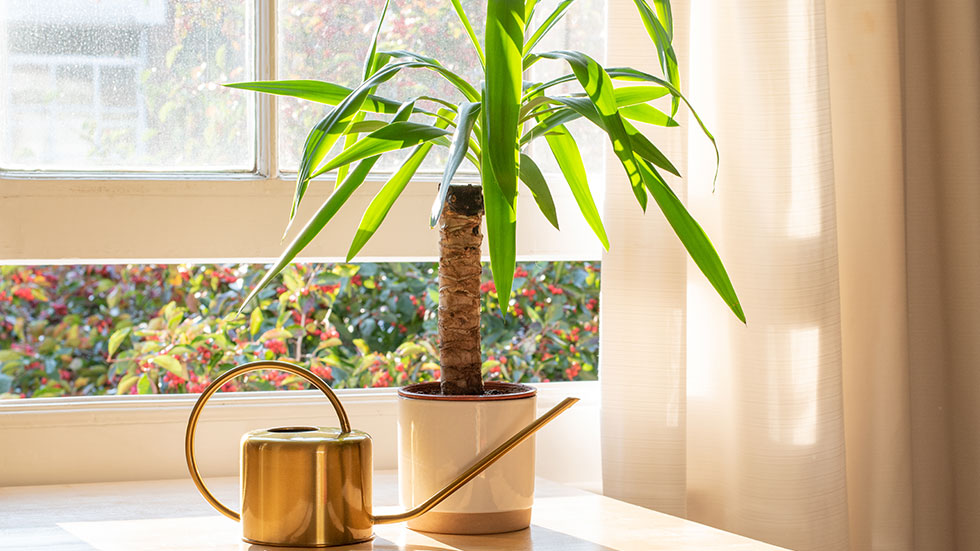
YUCCA
Yucca plants can grow both indoors and outdoors, have minimal care requirements, and can add a great focal point to a room.
Light—These plants prefer full sun, so stick them in a sunny corner with either direct or bright indirect sunlight.
Soil—Soil can be of poor quality, but should be heavy enough to hold the plant upright. A 3:1 mixture of sand and peat is also ideal for growing yucca in containers. Make sure the soil is loose and well-draining.
Water—Highly sensitive to overwatering, it’s best to water your yucca only once every few weeks. Make sure the soil is completely dry before watering again.
You can move your plants outdoors when temperatures have warmed enough in the spring or summer, but be sure to bring them back inside before the first frost or freeze. Place them in an area with gentle morning sun and afternoon shade.

AIR PLANT
Air plants may be the easiest plant to care for, but they do require proper environments to thrive.
Light—Place the air plants within 3-5 feet of a window or near an artificial light source. Keep them in indirect sunlight, such as in a kitchen or bathroom.
Soil—These plants don’t require soil and instead get their nutrients from the air.
Water—Water your air plants at least once per week. You can also mist the plants as needed in-between watering. Place the plants face-down in a bowl or container and let them soak for 10-20 minutes, then gently shake of excess water. Leave them out of their containers so they can dry completely.
Air plants do well in open containers, and avoid putting them too close to A/C vents or heat sources where they’d dry out sooner.
